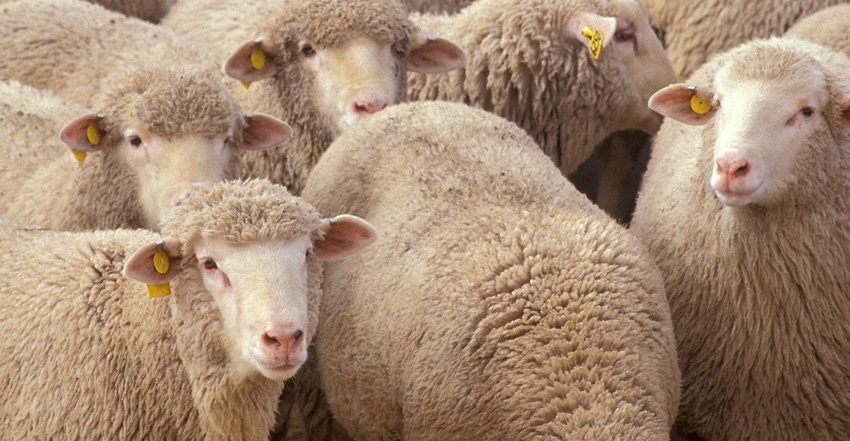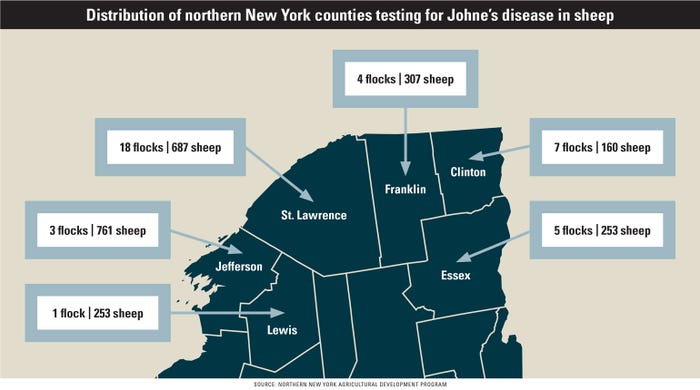August 5, 2020

The Northern New York Agricultural Development Program has posted the results of the first surveillance for Johne's disease in sheep on farms in northern New York at nnyagdev.org.
The 2019 project report and a fact sheet prepared by Jessica Scillieri Smith, a New York State Department of Agriculture & Markets veterinarian, and Betsy Hodge, Cornell Cooperative Extension livestock educator, include tips for reducing the risk of the bacterial infection in sheep.
What is Johne’s disease?
Johne's disease affects sheep, goats and cows. It is a frequently misdiagnosed gastrointestinal disease in sheep.
Clinical signs can sometimes take years to appear. The disease can be asymptomatic, making it difficult to diagnose without widespread testing in sheep flocks. Testing can also result in false negative results.
"While there is significant research on Johne's disease in dairy cattle, research into the prevalence and significance of this bacterial disease in smaller ruminants has been lacking,” Scillieri Smith says. “Funding from the Northern New York Agricultural Development Program has established a baseline survey of Johne's disease in regional sheep flocks and provided education to the participating farms.”
Thirty-eight farms representing 2,421 sheep participated in the baseline survey in 2019. A total of 319 2-year-old or older ewes from 13 flocks across Jefferson, Lewis and St. Lawrence counties, and eight flocks from Clinton, Essex and Franklin counties were selected for health surveillance sampling and Johne's disease testing.

The sampling showed Johne's disease present in some North County sheep flocks, but the level of infection appeared low. It was present in less than 50% of the 21 tested flocks.
Tips to protect your sheep
Smith and Hodge suggest the following tips to help protect sheep flocks from Johne's disease:
Only buy sheep from flocks documented as known negative for Johne's disease.
Test animals of unknown status before bringing them into your flock.
Quarantine and test animals after purchase to address the risk of false-negative test results.
Limit exposure of lambs to any known-positive adults in your flock.
Make sure food and water sources are difficult for animals to contaminate with manure, which can carry the Johne's-causing bacteria.
Talk with your farm vet to develop a "best practices" plan with support from the New York State Sheep and Goat Health Assurance Program.
Lambs raised on pasture with their mothers can be at risk of infection from the bacteria in manure in pastures. Johne's disease affects farm economics in terms of animal mortality, decreased live lamb births, decreased fertility, fiber loss, and increased veterinary costs and labor.
For more information, contact Betsy Hodge, Cornell Cooperative Extension of St. Lawrence County, at 315-379-9192 or [email protected].
Source: Northern New York Agricultural Development Program, which is solely responsible for the information provided and is wholly owned by the source. Informa Business Media and all its subsidiaries are not responsible for any of the content contained in this information asset.
Read more about:
SheepYou May Also Like




